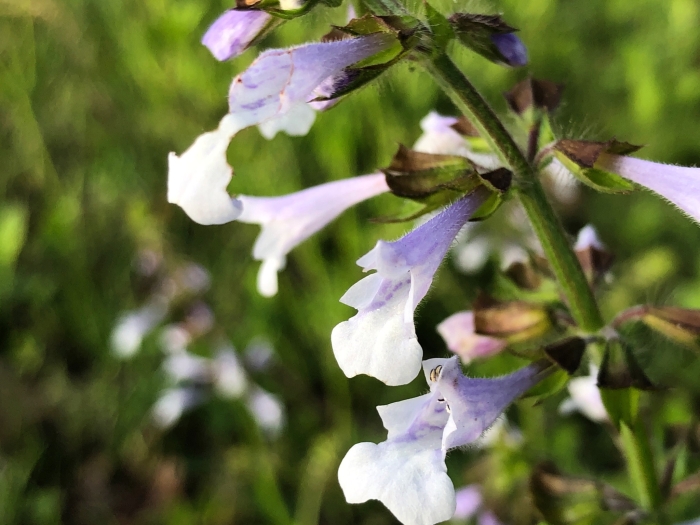Lyreleaf Sage
(Salvia lyrata)
Lyreleaf Sage (Salvia lyrata)
/
/

akt2
CC BY 4.0
Image By:
akt2
Recorded By:
Copyright:
CC BY 4.0
Copyright Notice:
Photo by: akt2 | License Type: CC BY 4.0 | License URL: http://creativecommons.org/licenses/by/4.0/ | Rights Holder: akt2 | Publisher: iNaturalist | Date Created: 2020-03-16T04:43:45Z |



















































Estimated Native Range
Summary
Salvia lyrata, commonly known as Lyreleaf Sage, is a herbaceous perennial native to open woodlands and meadows in the Central and Eastern United States. It typically grows to a height of 1-2 feet (30-60 cm) with a similar spread. Lyreleaf Sage has a rosette of green or purplish leaves, which are lyre-shaped and can add textural interest to the garden. The plant produces uneven whorls of two-lipped lavender to blue flowers on spikes, which are most abundant from April to June, though sporadic flowering may occur at other times. The flowers are moderately showy and attract pollinators such as bees and butterflies.
Lyreleaf Sage is valued for its attractive foliage and flowers, and it can be used in wildflower gardens, as a ground cover, or in borders. It is relatively low maintenance and can tolerate a range of soil conditions, though it prefers well-drained soils. While it can grow in both full sun and partial shade, flowering is best in sunnier locations. It is drought-tolerant once established and can be a good choice for xeriscaping. However, gardeners should be aware that it can self-seed prolifically and may become invasive in some areas. The cultivars with purple leaves offer additional ornamental appeal. Potential problems include slugs and snails, which may feed on the foliage, and powdery mildew in humid conditions.CC BY-SA 4.0
Lyreleaf Sage is valued for its attractive foliage and flowers, and it can be used in wildflower gardens, as a ground cover, or in borders. It is relatively low maintenance and can tolerate a range of soil conditions, though it prefers well-drained soils. While it can grow in both full sun and partial shade, flowering is best in sunnier locations. It is drought-tolerant once established and can be a good choice for xeriscaping. However, gardeners should be aware that it can self-seed prolifically and may become invasive in some areas. The cultivars with purple leaves offer additional ornamental appeal. Potential problems include slugs and snails, which may feed on the foliage, and powdery mildew in humid conditions.CC BY-SA 4.0
Plant Description
- Plant Type: Herb
- Height: 1-2 feet
- Width: 0.8-1 feet
- Growth Rate: Moderate
- Flower Color: Purple, White
- Flowering Season: Spring, Summer
- Leaf Retention: Semi-deciduous
Growth Requirements
- Sun: Full Sun, Part Shade
- Water: Low, Medium
- Drainage: Medium, Fast
Common Uses
Bee Garden, Bird Garden, Border Plant, Butterfly Garden, Deer Resistant, Drought Tolerant, Erosion Control, Fragrant, Groundcover, Hummingbird Garden, Potted Plant, Rabbit Resistant, Rock Garden, Showy Flowers, Street Planting
Natural Habitat
Open woodlands and meadows
Other Names
Common Names: Lyre-Leaf Sage, Cancerweed, Lyre-Leaved Sage, Cancer Weed, Lyrsalvia
Scientific Names: , Salvia lyrata, Horminum virginicum, Salvia acaulis, Salvia lyrata f. purpureorubra, Salvia obovata, Salvia ocimoides, Cunila lyrata, Horminum lyratum, Larnastyra lyrata
GBIF Accepted Name: Salvia lyrata L.